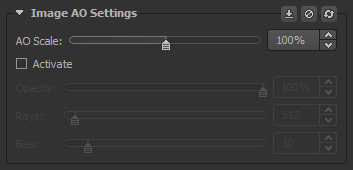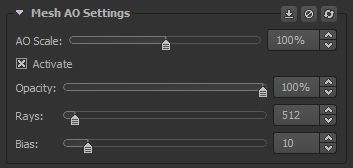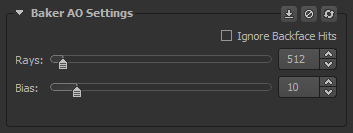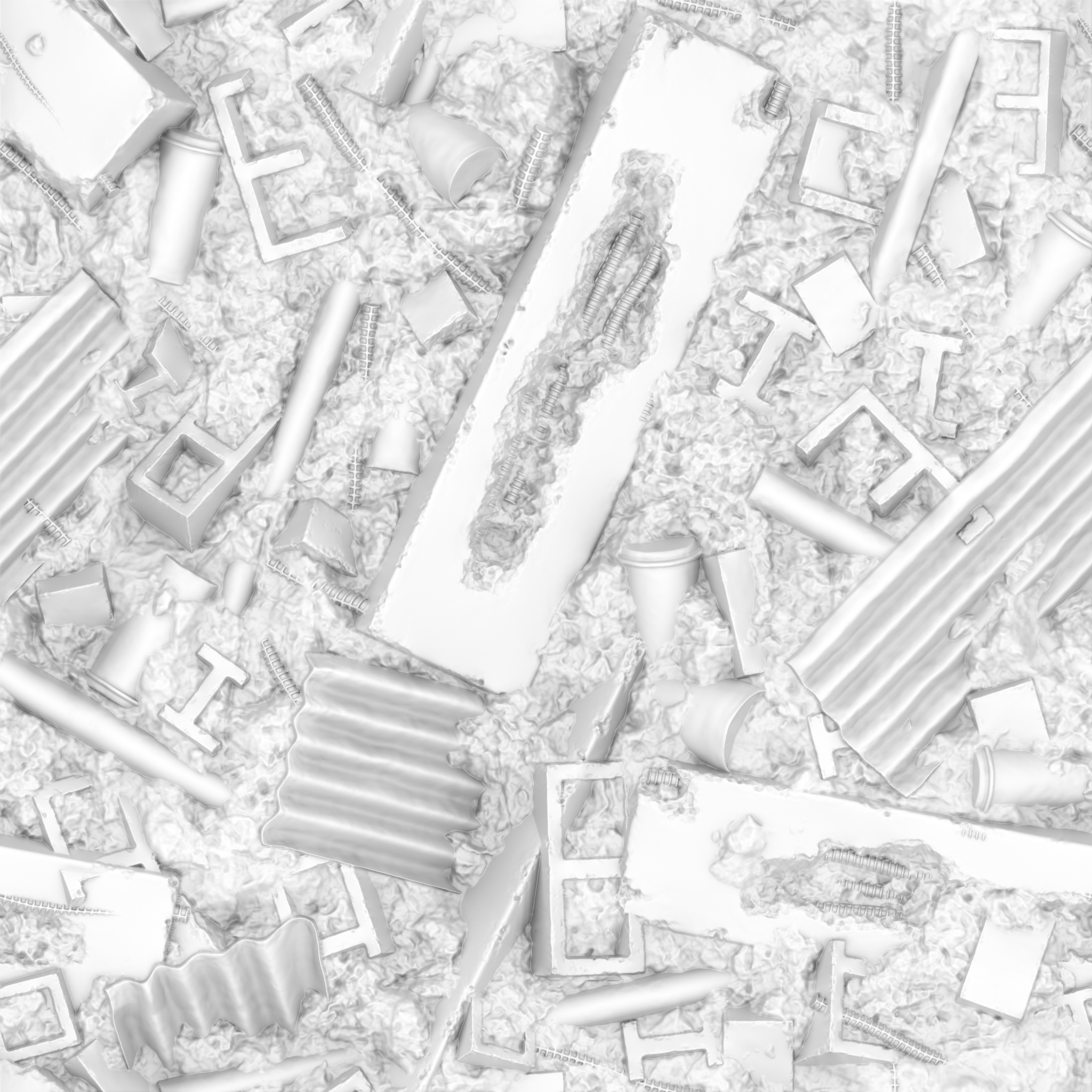Knaldtech Start
User Tools
Sidebar
Table of Contents
Ambient Occlusion Maps
The Ambient Occlusion maps within Knald are generated on the fly from the Normal & Height Maps provided by The Integrator. They are adjustable in real time and produce extremely high quality and clean results that rival baked AO at 600+ rays.
You can also generate Ambient Occlusion from high to low polygonal meshes via The Baker.
The Image Ambient Occlusion Group's Settings

AO Scale: The strength of the image based AO, irrespective of the Global Intensity slider.
The Mesh Ambient Occlusion Group's Settings

AO Scale: The strength of the image based AO, irrespective of the Global Intensity slider.
Activate This check box is a toggle to enable and disable Low Poly Ambient Occlusion via an imported mesh.
Opacity: The level of opacity used when mixing the Low Poly Ambient Occlusion with the image based Ambient Occlusion.
Rays: This slider is used to determine the number of samples in a discrete evaluation of the integral across the half sphere for diffuse outgoing radiance with a constant radiance field with a minimum of 256 and maximum of 8192 rays being available.
- A higher number or rays will increase the quality of the Mesh Ambient Occlusion at the cost of speed.
- We do not recommend going below a value of 512 rays as this can cause banding to appear in the map.
- A value of 1024-2048 or above should be perfect for production.
Bias: A bias value based upon mesh density. A value of 10 should be good in most situations.
The Baker Ambient Occlusion Group's Settings

Ignore Backface Hits Checking this option ignores backface ray hits, which is useful in instances where you are using floating geometry on the High Poly mesh.
Rays: This slider is used to determine the number of samples in a discrete evaluation of the integral across the half sphere for diffuse outgoing radiance with a constant radiance field with a minimum of 256 and maximum of 8192 rays being available.
- A higher number or rays will increase the quality of the Mesh Ambient Occlusion at the cost of speed.
- We do not recommend going below a value of 512 rays as this can cause banding to appear in the map.
- A value of 1024-2048 or above should be perfect for production.
Bias: A bias value based upon mesh density. A value of 10 should be good in most situations.


